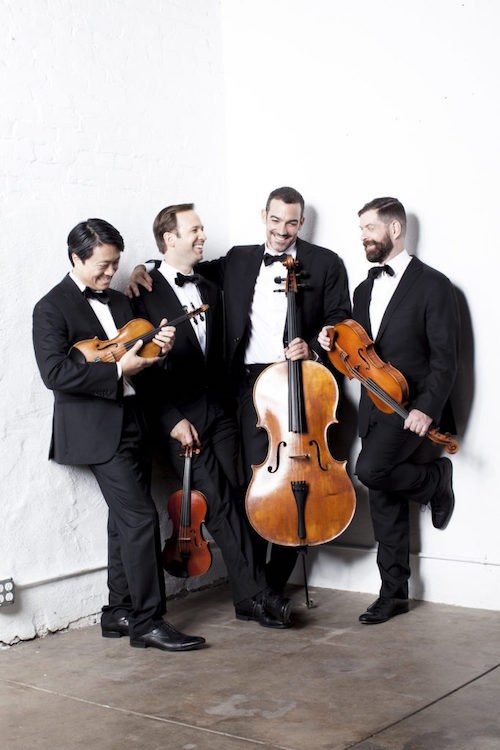

Press

By Andrew Lindemann Malone for Washington Classical Review
Kevin Puts has written three works for the Miró Quartet, and the composer and ensemble clearly know each other’s strengths.
On Sunday afternoon at the Barns at Wolf Trap, the quartet performed Home, Puts’ latest for the group, completed in 2019 as a musical representation of the journeys of refugees. The music dovetails nicely the Miró’s approach, in which every moment is made as vivid as it can be.
Home begins with a simple melody over a drone, rooted strongly in C major, before the music is “driven out of tonality,” as violinist Daniel Ching described it in remarks before the work. The exile begins with a harried walking beat and spiky pizzicati, but the notes become gradually more and more distant from C, while the beat becomes more and more relentless, even as sharp stabs of chords, discomfiting glissandi, and hectic fragments of themes pummel it.
Occasional pauses allow everyone to catch their breath before a fresh set of trials begins, with icy, gleaming harmonics or sudden crescendi appearing in the path. Finally, the music makes a hard-won transformation back into C major, but coruscating sheets of notes contrast with the earlier drone, leaving the ground feeling not yet fully stable.
The Miró’s performance was so absorbing that one wished for a few more measures in the closing section to recover from the preceding trials. In particular, cellist Joshua Gindele did yeoman’s work keeping the beat on track in the middle section and also contributing to the harrowing atmosphere.
Two standards of the quartet repertoire bookended the Puts quartet on Sunday, played with equal vividness but with differing results.
In Franz Joseph Haydn’s Quartet in D Major, Op. 64, no. 5 (“The Lark”), which opened the program, the Miró pushed the music out of the Classical style into a proto-Romantic cast, losing much of its charm. Where simple affection would have wrenched the heart in the Adagio cantabile second movement, the Miró overwrought the melody into something slightly mawkish. In the Vivace finale, normally a smiling romp, Ching took a daringly fast tempo and the rest of the quartet raced alongside in a nervous sprint. Exciting? Definitely, and the players received a big cheer at the end. But the performance lacked the grace and balance one also expects in Haydn.
After intermission and a hilarious Q&A for the “Chamber Music from the Barns” radio program, in which violinist William Fedkenheuer got off some particularly good one-liners, the quartet presented Maurice Ravel’s String Quartet.
Many performances of this quartet’s first movement sound a bit muted in an effort to evoke a certain languid Frenchness, but the Miró sparkled with vitality while also sounding thoroughly Gallic. The second movement’s extended pizzicati bounced cleanly and merrily, and the slow third movement pulsed with rhapsodic energy, particularly the section which cellist Gindele plays a drone under a cloud of spine-tingling trills from Ching, Fedkenheuer, and violist John Largess. The players brought plenty of restless, merry energy to the Vif et agité finale, a fitting close to this program.